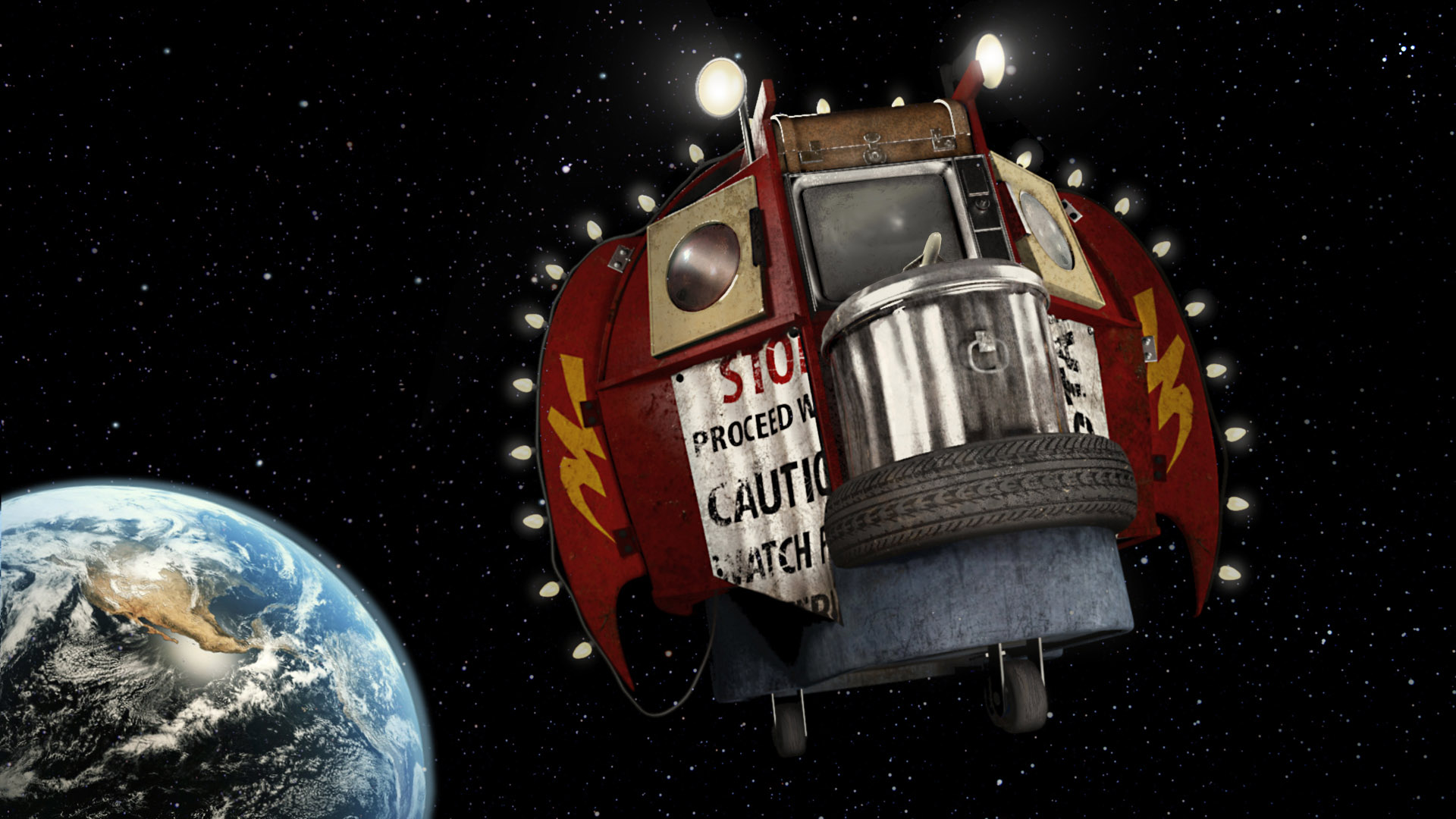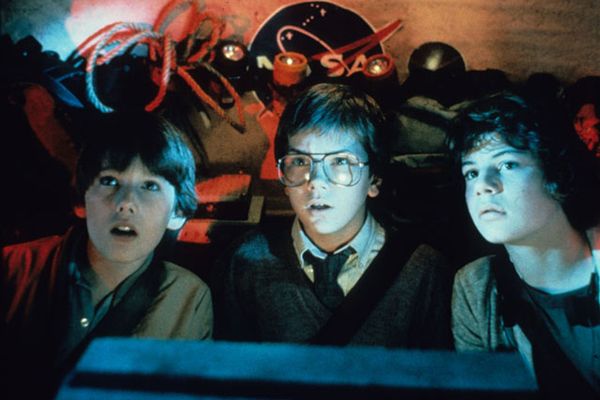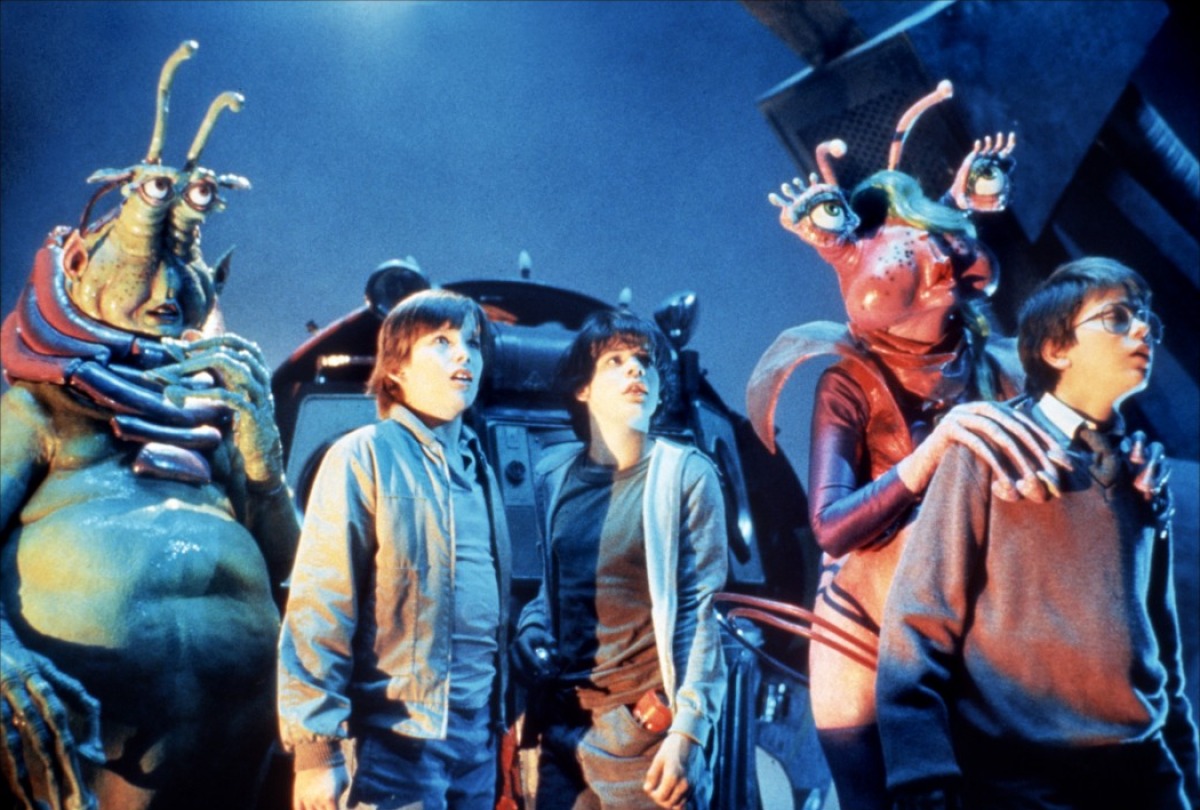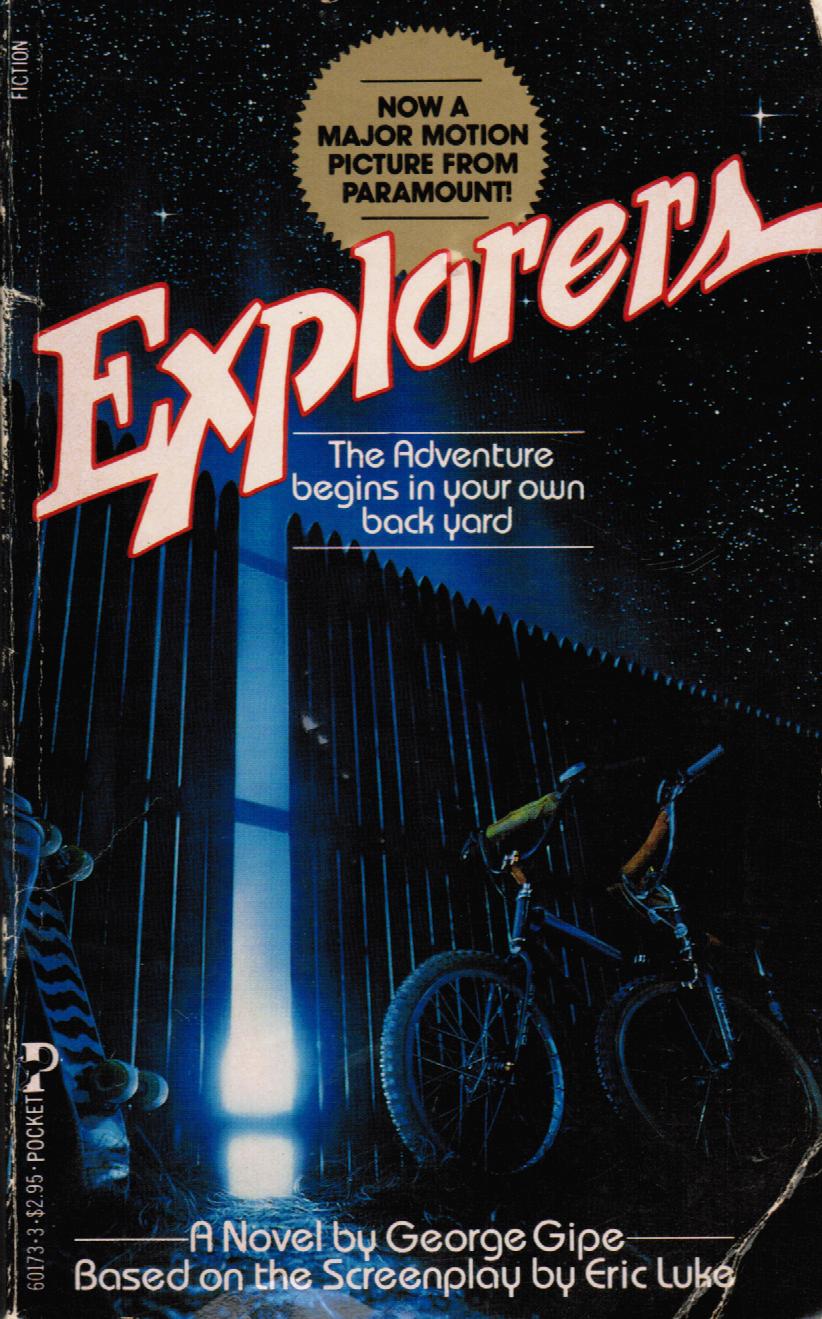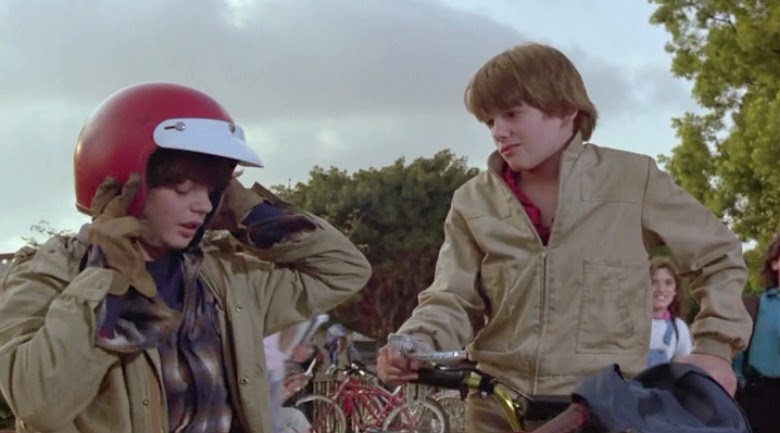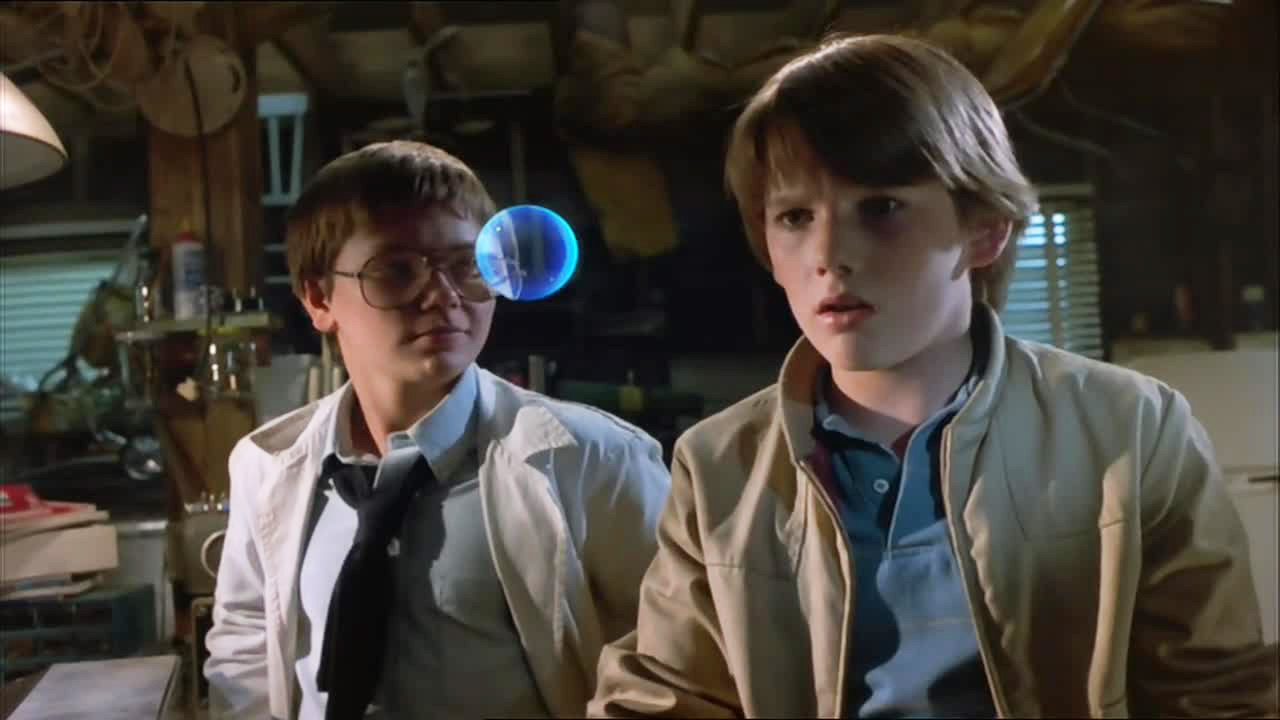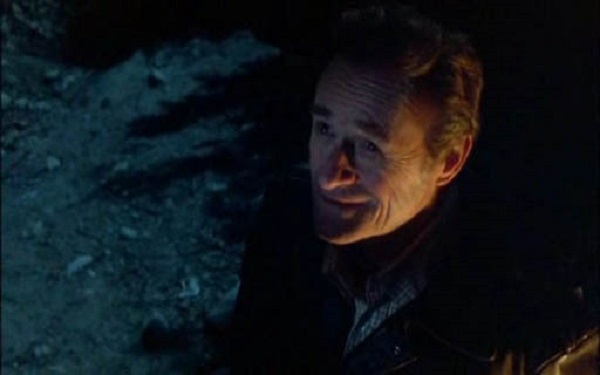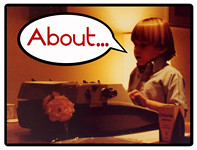In the pantheon of of 80s era kid adventure films, there are a few that really struggle to keep up with some of the most popular flicks. Whereas the Goonies, E.T., Gremlins and Stand By Me are considered the gold standard of the genre, I’ve always had a soft spot in my heart for the flicks that just don’t have the same huge fan-bases. Movies like the Manhattan Project, the Monster Squad SpaceCamp and Cloak and Dagger are prime examples; they certainly have their fans, some more rabid than others, but they tend to get overlooked and I’ve always felt like they deserved more respect. Another film that would fall into this category but is a very difficult film to defend is The Explorers. Directed by Joe Dante and released in 1985 this sci-fi kids adventure flick is kind of a brilliant disaster. There are a lot of great ideas, some great young actors, and some really fun special effects, but none of that can really save from the flick from an awkward second half, a rushed production and a script that was probably a couple drafts away from being a much more solid story.
The Explorers is one of those movies that I managed to completely miss out on during my younger years in the 80s, but I eventually connected with in in the late 90s on a fox affiliate Saturday afternoon TV screening. At the time it felt like a missing puzzle piece to my childhood, another sci-fi component that complimented both E.T. and the other kid adventure flicks I loved as a kid (Monster Squad and the Gate for horror, Goonies and Stand By Me for grand adventure, Cloak and Dagger and the Manhattan Project for spy thrillers.) But it always felt off, even from the first viewing. There was something about the super-cartoon-y aliens at the end of the flick that just really ruin the movie for me. I know that Joe Dante is a huge fan of Chuck Jones and the Looney Tunes in general, but he does a much better job of working that style of wacky cartoon influence into his other films (Gremlins and his segment of Twilight Zone: The Movie.)
So when I started collecting 80s era movie novelizations, one of the books that was at the top of my list to find was the adaptation of The Explorers…
My good friend and Cult Film Club co-host Paxton Holley recently guested on the Atomic Geeks podcast where he re-envisioned the Thunder Road spaceship from the Explorers into an evil,Christine-like possessed vehicle, and the ensuing conversation really got me into the mood to revisit the film and finally dig into the novelization. It’s been over a decade since I watched the film all the way through (though I did skip through it recently in order to break down Ben’s room for my Awesome 80s Bedrooms series.) So I did my best to go into the story with fresh eyes this time. I decided to read the book first and then compare and contrast with the film. I was pretty surprised by what I found. The novel was written by George Gipe, sort of a notorious figure in the movie novelization circle for his weird take on the first Back to the Future and Gremlins adaptations. So I was hoping for some batshit crazy additions to the story. What I ended up finding is that Gipe’s take on the story is probably the best interpretation of The Explorers.
First and foremost, I think most fans of the movie would probably agree that the best part of the film (and story in general) is the opening 50 minutes that deals with the three main heroes Ben, Wolfgang, and Darren discovering, building, and testing their force field technology. Though it has its head in the clouds, this part of the story is firmly grounded for the most part and has a lot of fun interactions between the characters and alludes to deeper aspects of the childhood experience. It’s no Stand By Me, but there are some great bits that could stand toe to toe with any of the other, higher profile kid’s flicks of the time. Well, the book takes this to heart and then some. In fact, this portion of the story is the main focus of the book taking up easily the first 4/5ths of the page count. Every scene from the movie is present, though highly expanded upon. The story starts with Ben (Ethan Hawke in the movie) having a very vivid dream about an out of body experience flying over a landscape that looks like a circuit board. This is the discovery that leads to him and Wolfgang (River Phoenix) designing an attachment to a computer terminal that creates a programmable force field bubble. In the book, this segment of the story is fleshed out much more and we really get into the head of Wolfgang and Ben during this process. We also get a lot more backstory on the dynamics between the kids, not only between Ben, Wolfgang, and Darren, but also between Ben and Lori (his school crush) and all three and the dreaded Steve Jackson, the school bully.
While reading these first two hundred or so pages of the book I actually felt that it was keeping pace with the movie pretty well as I remembered it. But when I popped in the movie in after finishing the book I was astounded at how fast the movie moved, glossing over so much of the story. There are so many sequences that are covered in multiple pages in the book that fly by with a single line of dialogue or even just a look from one of the actors. For instance, there’s a sequence in the story where Ben follows Darren home after Darren saves him from getting a serious beat down from the bully Steve. When the two approach Darren’s house he explains to Ben about his home situation, how his father has been out of work for awhile, how his dad’s girlfriend is living with them and mostly alright but that his dad and her can really get into some crazy fights. In the actual film though, this is truncated to practically nothing, all nuance stripped, and all that’s left is a couple leading lines of dialogue that suggest what’s actually in the book. Similarly, there’s a whole bit where Darren is running away from Jackson and his cronies where you learn that his father taught him how to handle himself in a fight, and to know when it’s time to run. All of that is pretty much missing from the film, though I know from reading interviews with Dante that the footage was shot, it’s just that it had to be cut to make the film ‘work’.
What’s weird, is that I could have sworn it was all in there when I watched this as a teen. Again, I have memories of watching Explorers in the 90s and feeling that the first half was pretty darn close to the vibe of Stand By Me, but now that I’m revisiting it, it’s really pretty hollow. Only after reading the book have I gotten the feeling that the story was elevated up a bit, fleshed out more to how I remembered it. Another place where the two really differ is in the relationships between the three kids. In the book, even though Ben and Wolfgang are best friends, they really don’t get along all that well. Ben constantly has his head in the clouds either thinking about finding a way to escape the planet and go into deep space or trying to figure out a way that he can peep into Lori’s room so that he can get a better idea of what she’s like. Because of this they really end up butting heads during the development of the force field bubble. Whereas Wolfgang wants to spend years testing it appropriately, Ben keeps rushing it, and puts them in awkward spots where they could be killed. In the book Gipe makes pains to underline just how dangerous the force field can be, whether it’s how easily it can shoot through solid concrete with ease or that there is only a finite amount of air trapped inside and anything living will suffocate if they don’t have a steady supply of oxygen. I know this all makes it into the film in one way or another, but it’s much clearer in the book. There’s a segment in the adaptation where the boys are taking the craft up into the atmosphere on their first test run and they end up running out of oxygen. Again, this is also in the film, but in the book this sequence plays out like a scene from Apollo 18. The boys are practically on the brink of suffocation before they figure out how to fix the problem whereas in the film it’s pretty much glossed over. This part was really integral in the book too because it really sets the boys at odds in how to proceed, but in the movie it’s just treated as a hiccup that is not a very big deal.
Then there’s Darren, who really wants nothing to do with either Ben or Wolfgang in the book. Though he does get pulled back into the fold as the story goes on, there are multiple places in the story where he basically tells the guys to take a hike. It’s not until he’s pulled into a group dream halfway through the story where he really comes back into the group as he can’t deny the extra terrestrial events. In fact a lot of the characters are shortchanged in the movie including Charlie Drake. a police helicopter pilot who ends up chasing down the boys in a few sequences. In the movie his character is given a bit of screen time, every second of which is lovingly portrayed by Dante mainstay Dick Miller. What we get on screen is great, but there is a lot more to the character that we get in the book.
Though there aren’t a lot of ‘deleted scenes’ in the book, there are a couple. The main one centers on a birthday party that Lori invites Ben and the other to. The sequence is kind of weird as it mainly deals with how Wolfgang considers himself asexual and thus he spends time screwing with both Darren and Ben as they try and pursue the girls at the party. Like a lot of 80s era novelizations there’s a weird addition of some pretty adult themes in the book. With Ben, Wolfgang tricks him into thinking that Lori likes Steve, which forces Ben to go and profess his love to Lori. This ends in a segment where Ben gives Lori a ring made with a fake Mars rock and a super awkward kiss. Then there’s Darren, who Wolfgang convinces that the reason he’s constantly striking out with girls is because he only approaches the virgins and that in order to land a date he needs to find a girl who has gone all the way. There’s also a scene after Ben and the kids leave for their final trip when Ben’s mom finds a Playboy hidden in the papers on his desk. It’s innocent enough on the face of it, but still a little jarring in the book.
All of this expanded material is interesting stuff from a character aspect, and it’s sort of frustrating knowing what is coming at the end of the book. And I think this more or less sums up how George Gipe felt about the story in the writing process. After reading the book and really enjoying the first chunk of the story before the kids really go deep into space, I get a feeling that Gipe didn’t want to write about any actual contact with aliens. As I was reading through the book I was dreading that segment, knowing that it was going to be horribly cartoon-y and not in step with the rest of the story, and for a brief moment I thought Gipe might have had the balls to take it out completely. In the movie the kids make contact about halfway in, sometime around the 55 minute mark. In the book, it’s not until almost 210 pages into the 250 page book. And when they do finally make contact, it goes by pretty quick after only 15 pages. I honestly think Gipe knew that the better material was all of the stuff leading up to the aliens and it feels like he was doing his best to flesh out all of those scenes. He seems to gloss over most of the actual alien stuff in the book, giving only vague descriptions of the beings and scuttling the kids away from them as soon as we learn that the aliens are actually kids.
In fact, the coda at the end of the book is longer than the time the kids spent on the alien craft, and looking back, I think it would be really easy to excise all of that from the story completely which would make the whole thing much more poignant. I mean at the end of the day the story is really about the yearn to discover and the idea of going exploring, it’s not about getting to that destination. Looking back, I have to wonder if the original drafts or pitches for the story didn’t involve aliens at all, but in the wake of E.T. the studio wanted to try and piggyback on that film’s success. Speaking of the coda, man is it a huge downer. Not only are our intrepid explorers really let down by the weird TV-quoting toddler aliens, but when they get back to Earth everything seems to fall apart. The Thunder Road is destroyed in the landing, most of their keepsakes from the trip are also destroyed, and they all come to the realization that there is no one they can share these experiences with. A very weird and down ending, but after the run-in with the goofy aliens, it’s oddly welcome.
Joe Dante is on record as being pretty disappointed with the film, both in the final cut and the film-making process which was majorly truncated and rife with problems. He apparently filmed many of the scenes that are in the book, but had to cut them to make the story work when his release schedule was pushed up halfway through filming. Because of his hasty editing, there are some things that were left in the film that actually have richer backstories. In the sequence at the drive in, there is a teenage couple watching the film that are commenting on how fake it looks. That boy is actually Ben’s older brother who is sort of a pain in Ben’s side in the book because he’s Mr. Perfect with great grades and college prospects. There are also a number of references to Space Camp in the film with flyers and stickers on Ben’s desk, as well as the big NASA sticker on the inside of the Thunder Road. These are all part of a sequence in the book where Ben begs his parents to be able to go, but it ended up on the cutting room floor when it came to the film.
The last big difference I want to point to between the movie and the book is that there is the naming of the space vessel, the Thunder Road. In both the book and the movie Darren comes up with the name, and in both he mentions that it’s from a Bruce Springsteen song. But in the book there is a much more important reason it’s called the Thunder Road. When the boys find the old, discarded tilt-a-whirl ride car, they have a hell of a time getting it out of the junkyard and to the creek bed where they work on it. There’s a whole chapter where the boys are slowly rolling it through their neighborhood in the dead of night and it’s making a ton of noise as it rolls over the pavement. This leads to a bit where they lose control of it and it rolls freely down a hill making a thundering racket and waking up all their neighbors. Thus, Thunder Road.
All in all, I’m glad I finally dug into this book as it’s given me a much better appreciation for the film and story of the Explorers. Normally I tend to focus on the differences between a book and movie when I read novelizations, but in this case, it was all about helping a struggling movie and story find the footing that it deserved. If you’re a fan of the film I highly suggest picking up the book as it will only expand on your appreciation for this much maligned 80s flick…

